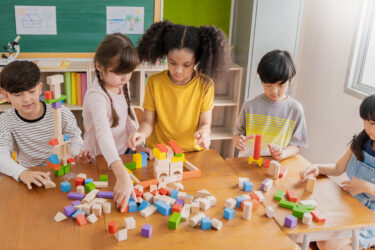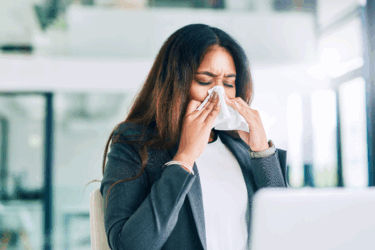What a phenomenon! We know fresh air is good for kids and yet when it’s cold outside we tend to keep them indoors. Why? Playing outside, sledding, skating and skiing are all great ways to benefit from the winter weather, as is just taking a brisk walk or hike, or having a fun romp in the snow.
Dr. Jillian Klein at Cincinnati Children’s Hospital Medical Center has easy tips for allowing kids to play outside daily — no matter the temperature!
CF: Is cold air bad for your lungs?
JK: For most children, cold air is not bad for the lungs! Our bodies are built to regulate heat and moisture when we breathe (that’s a big part of the nose’s job). For kids with asthma, we take extra precautions because cold air can cause airways to tighten up. So, when your child with asthma goes out into the cold to play, it might be a good idea to give them two to four puffs of their inhaler to prevent any problems. For the rest of the kids, bundle up to protect their skin and keep them cozy, but their lungs will be fine and happy with the winter air!
CF: We always worry about hydration in the summer, but what about when it’s cold outside? Do hydration needs change?
JK: Hydration is important no matter what time of year it is. When it’s summer and you’re running around sweating, you lose water through the sweat. You sweat when you’re active during the winter, too. You also are using extra water to moisturize the air you’re breathing. Make sure that children are drinking plenty of fluids, no matter what time of year it is. Water is the best way to stay hydrated — the goal is to drink a half-cup to two cups of water every 15 – 20 minutes while exercising/playing. The recommended daily amount of fluids is: five glasses (one liter) for 5- to 8-year-olds, seven glasses (1.5 liters) for 9- to 12-year-olds, eight to 10 glasses (two liters) for 13 years and older.
CF: Are kids susceptible to the “winter blues” and will getting outside to play help?
JK: Everyone can be susceptible to feeling “blue” or “down” during the winter. Sunlight does a lot to benefit our mental and physical health — and children are just as likely to be affected as adults. Helping kids get outside and play during the winter helps their mood for multiple reasons. First, exercise and active play releases endorphins which improves kids’ moods. Second, playing outside (especially with others) keeps their minds and imaginations active and helps them with social skills. Third, exposure to sunlight means higher vitamin D levels — which leads to improved mental and physical health. Some people use sun lamps during the winter months to improve their vitamin D levels, but nothing beats good, old-fashioned sunshine.
CF: Any good rules to bundling up when it’s cold?
JK: Layers! Layers provide extra warmth and make going inside and outside easier. Make sure you keep sensitive skin protected from the cold air — covering up hands, faces and ears will protect you from frostbite and just uncomfortable cold skin. Waterproof clothes for the most outer layer is a really good idea — especially if you’re going to play in the snow. Keeping the layer of clothing closest to your skin dry is really important for preventing heat loss and damage to the skin. Cold, wet clothes up against your skin is also just really uncomfortable! Another important thing to remember for babies is that they lose most of their heat through their heads — hats are super important in the winter to keep babies warm.





